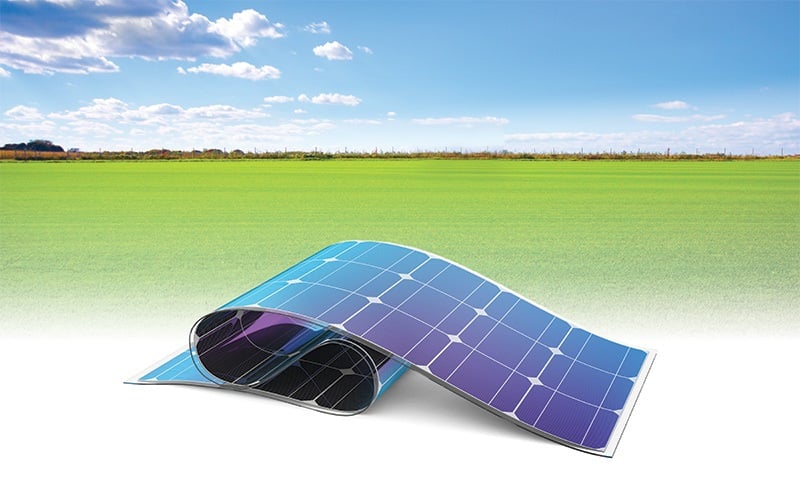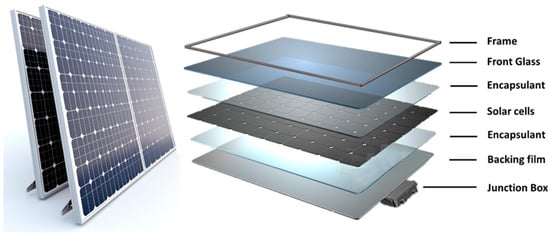What Are the Advantages of Mono Silicon Solar Panels: 5 Key Benefits
Mono silicon panels boast ~22-23% efficiency (lab:26%), lower temp coefficient (~0.35%/°C) cutting loss, 25-year warranties (80% output retained), sleek uniform cells, and superior low-light output vs. polycrystalline, maximizing ROI with compact design.
Higher Efficiency on Same Size
Monocrystalline panels are the undisputed leaders here, with mainstream consumer-grade models now consistently achieving efficiencies between 21% and 23%. In practical terms, this means a standard, full-size panel (around 2 meters by 1 meter, or roughly 2 square meters) will typically have a power rating of 440 to 450 Watts. Just five years ago, that same-sized panel would have been rated at about 320W to 350W.
PERC adds a reflective layer on the back of the cell, bouncing previously lost photons back into the silicon to generate more electrons, boosting efficiency by about 1-1.5% absolutely. Half-cut cells take the standard 60 or 120 full-sized cells on a panel and slice them in half, which reduces electrical resistance and internal power loss, especially when part of the panel is shaded. A panel with 120 half-cut cells will lose less overall output if one cell is covered, because the current is split across two parallel strings. The fundamental advantage of mono silicon's pure crystal structure is that it provides a perfect, unbroken path for electrons to flow, which is why it starts with a higher efficiency baseline than multi-crystalline silicon, which peaked at around 17-18% efficiency for commercial panels.
The real-world impact is simple math: to build a 10 kW residential solar system, you would need about 23 of today's high-efficiency 440W monocrystalline panels. If you used older technology rated at 320W, you would need 32 panels to achieve the same system output. That’s a difference of 9 panels.
On a roof with complex angles, limited clear space, or a desire for a minimalist aesthetic, the ability to generate the same amount of power from a 20-25% smaller area is a game-changer. It's not just about fitting a system on a small roof; it's about maximizing the financial return of every square foot you have available. For commercial or utility-scale projects, this density is even more critical, as it directly reduces the costs associated with racking, wiring, and land preparation.

Long Service Life with Warranty
Most reputable manufacturers guarantee that their mono silicon panels will still produce at least 85-87% of their original nameplate power output after 25 years of service. For a 450-watt panel, this means it should still be generating a minimum of roughly 385 watts a quarter-century from now.
The longevity of mono silicon panels is backed by two distinct warranties that work together. The first is the product warranty, also called the materials or workmanship warranty, which typically covers 12 to 15 years for most brands and protects against defects in manufacturing. A premium manufacturer like SunPower (now Maxeon) often offers a 25-year product warranty, signaling exceptional confidence in their build quality. The second, and more important, is the performance warranty. This is not a guarantee that the panel will never fail, but a promise about how slowly its power output will decline. The industry standard degradation rate is about 0.5% to 0.55% per year.
Feature | Standard Tier | Premium Tier | Explanation |
Product Warranty | 12-15 years | 25-30 years | Covers defects in materials and workmanship. |
Year 1 Performance | 97.5% - 98% | 98% - 99% | The initial, slightly higher drop in output. |
Annual Degradation Rate | 0.55% | 0.25% - 0.40% | The guaranteed maximum yearly power loss after Year 1. |
End-of-Warranty Performance | 85% at 25 years | 86% - 92% at 25-30 years | The minimum guaranteed output at the end of the term. |
A difference of just 0.15% in annual degradation between two panels compounds significantly over time. A system with a 0.40% annual loss will generate approximately 3.75% more electricity over a 25-year period compared to a system with a 0.55% loss. On a 10 kW system, that difference can amount to thousands of kilowatt-hours of extra electricity, directly increasing your savings on utility bills. When evaluating panels, the key is to look at the detailed warranty certificate. A strong warranty from a manufacturer with a proven 30-40 year track record and a solid financial standing is more valuable than a spectacular-looking warranty from an unknown company that may not exist in 10 years to honor it.
The 25-year lifespan is a conservative estimate; many early mono silicon installations from the 1980s are still operational today, often producing at 70-80% of their original capacity, demonstrating the technology's inherent resilience and making it a true 25-year investment with a predictable energy yield.
Less Space Needed per Watt
A modern mono panel now delivers 420 to 450 watts from a footprint of approximately 18 to 19 square feet (about 1.7 sq meters), achieving a power density of roughly 22 to 25 watts per square foot. This high power density is what allows for significant energy independence, even on roofs with limited suitable area.
For example, to install a 9.6 kW residential system—a common size for a home with high electricity consumption—the choice of panel efficiency directly dictates how much roof area is required. Using high-efficiency 400-watt mono panels, you would need 24 panels. With each panel occupying about 19 square feet, the total area required is approximately 456 square feet. If you were to use less efficient panels rated at 330 watts each, achieving the same 9.6 kW output would require 30 panels. This larger quantity of panels would need around 570 square feet of clear, unshaded roof space. The difference of 114 square feet is significant; it's the equivalent of a standard parking space or a small bedroom.
Installation Scenario | High-Efficiency Mono (450W Panels) | Standard Efficiency (370W Panels) | Space Saving with Mono |
Target System: 9.0 kW | 20 panels needed | 25 panels needed | 5 fewer panels |
Total Area Required | ~380 sq ft | ~475 sq ft | ~95 sq ft saved |
Target System: 12.0 kW | 27 panels needed | 33 panels needed | 6 fewer panels |
Total Area Required | ~513 sq ft | ~627 sq ft | ~114 sq ft saved |
A smaller array footprint translates to lower balance-of-system (BOS) costs. With fewer panels to install, you need less racking, fewer connectors, and a reduced length of DC wiring. Labor costs for installation are also often lower, as the crew is handling and mounting 20 panels instead of 30 for the same system size, potentially reducing installation time by 15-20%. Furthermore, for properties where the roof area is at a premium, maximizing output per square foot can mean the difference between covering 100% of your annual electricity usage and only covering 70%.
Better Performance in Heat
In reality, photovoltaic cells actually prefer cooler, sunny conditions. As panel temperature increases, the electrical voltage they can produce drops, leading to a decrease in power output. This is quantified by a metric on every panel's spec sheet called the temperature coefficient of power, expressed as a percentage loss per degree Celsius above the standard test condition of 25°C (77°F). For homeowners in hot climates like Arizona, Texas, or Southern Europe, where rooftop temperatures can easily exceed 65°C (149°F) on a summer day, this performance drop is a major factor in annual energy yield.
The temperature coefficient for modern mono PERC panels typically ranges from -0.34% to -0.26% per °C. A premium panel might have a coefficient of -0.29%/°C, whereas a standard polycrystalline panel might be rated at -0.40%/°C. This difference becomes critically important in real-world operating conditions. Consider a sunny day where the ambient air temperature is 35°C (95°F). The rooftop, where panels are installed, can be 30°C hotter than the air, meaning the panel's surface temperature reaches 65°C. This is 40°C above the standard 25°C testing temperature.
l Premium Mono Panel (-0.29%/°C): Power Loss = 40°C * 0.0029 = 0.116 or 11.6%
l Standard Poly Panel (-0.40%/°C): Power Loss = 40°C * 0.0040 = 0.16 or 16.0%
For a panel rated at 400 watts, the mono panel would be outputting about 353 watts in the heat, while the poly panel would be down to 336 watts. That’s a 17-watt advantage per panel for mono silicon due solely to its better heat tolerance. Over a 10-hour summer day, that single mono panel generates an extra 170 watt-hours of energy. For a 30-panel system, this daily advantage grows to over 5 kWh—which is essentially free extra energy every hot day.
Panel Technology | Typical Temperature Coefficient | Power Output at 65°C (from a 400W rating) | Annual Yield Impact (in a hot climate) |
Premium Mono PERC | -0.29% / °C | ~353 Watts | Approx. 3-5% higher than poly |
Standard Mono PERC | -0.34% / °C | ~346 Watts | Baseline |
Polycrystalline | -0.40% / °C | ~336 Watts | Approx. 3-5% lower than standard mono |
The real-world impact is that a system's highest power output rarely occurs at noon in mid-summer. Instead, it often happens on a clear, cool spring day. In places like Phoenix, a panel's output at 2:00 PM in July can be 15-20% lower than its rated capacity, making the panel's heat tolerance a key driver of seasonal performance.
To capitalize on this, installers in hot regions should prioritize installations with a minimum 6-inch air gap between the roof and the panels to facilitate passive cooling. Choosing panels with an all-black aesthetic may look sleek, but it's important to note that the darker backsheet can absorb more heat, potentially raising the operating temperature by 3-5°C compared to panels with a white backsheet, slightly amplifying the power loss. Therefore, when selecting panels, especially for hot climates, comparing the temperature coefficient is as crucial as comparing the efficiency rating. A panel with a 21.5% efficiency and a coefficient of -0.29%/°C will consistently outperform a 22.0% efficient panel with a coefficient of -0.38%/°C for a significant portion of the year in warm environments, leading to a higher total energy production over its 25-year lifespan.

Stable Power Over Long Time
The financial return on a solar investment isn't calculated from the output of the first year, but from the total energy produced over 20 to 30 years. The key to maximizing this long-term value isn't just a high starting efficiency; it's the panel's ability to resist power decay over decades of exposure to the elements. This long-term stability, often called 'bankability,' is a critical advantage of mono silicon technology. The industry measures this through a panel's annual degradation rate, which is a direct predictor of its energy yield in year 15, 20, and beyond.
l Initial Drop: A power loss of 1.0% to 2.0% occurs within the first 12 months of exposure to sunlight, a phenomenon known as Light Induced Degradation (LID).
l Stabilized Rate: After the first year, the degradation rate stabilizes to a much slower annual pace.
l End-of-Life Performance: A guaranteed output of 84% to 92% of the original nameplate power after 25 to 30 years.
Over time, exposure to daily thermal cycling (panels can experience temperature swings of 40-50°C every day) and continuous ultraviolet radiation can cause these defects to worsen in lower-quality materials. Mono silicon's superior starting point means it has a stronger resistance to this aging process. Furthermore, premium mono panels incorporate advanced cell and module design features that actively combat specific degradation mechanisms. For example, Potential Induced Degradation (PID) can cause power losses of 5% or more within just a few years in humid conditions, but it is effectively neutralized in modern mono PERC panels through the use of anti-PID cell surface passivation and specialized encapsulants. Another critical factor is the resistance to micro-cracks.